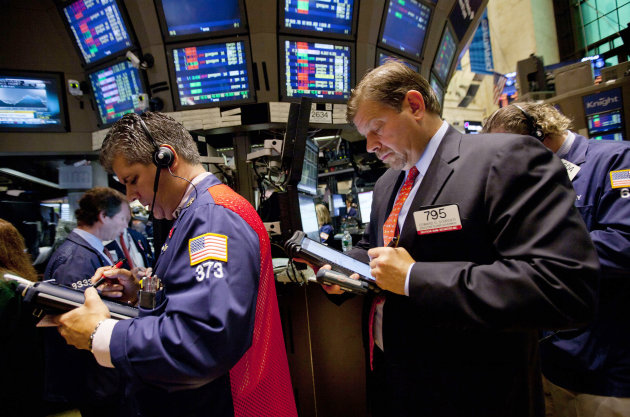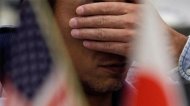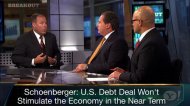DIRECTIONS: Read the following and answer all the questions?
http://www.americanenglishconversation.com/
http://www.freeenglishconversation.blogspot.com/
http://www.grammar-help.blogspot.com/
CIUDAD JUAREZ, Mexico (AP) — An entire 20-man police force resigned in a northern Mexican town after a series of attacks that killed the police chief and five officers over the last three months, state officials said Thursday.http://www.americanenglishconversation.com/
http://www.freeenglishconversation.blogspot.com/
http://www.grammar-help.blogspot.com/
The officers' resignation Thursday left the 13,000 people of Ascension without local police services, Chihuahua state chief prosecutor Carlos Manuel Salas said. State and federal police have moved in to take over police work, he said.
The mass resignation appeared to be connected to a Tuesday attack by gunmen that killed three of the town's officers, Salas said.
But it wasn't the first deadly attack on the police department this year.
In mid-May, police chief Manuel Martinez, who had been in office just seven months, was gunned down with two other officers on a nearby highway. The three had been kidnapped a day before police found their bodies riddled with bullets in the back seat of a sedan.
The town's police force was relatively new.
Angry residents had led authorities to replace the entire force last September after the mob killings of two teenagers who had allegedly kidnapped a girl from a seafood restaurant. People claimed police officers were aiding drug gangs.
Martinez, with his new police force, had said he wanted to end the kidnappings and extortions that have terrorized the town where people grow green chili and cotton.The new police in Ascension had installed a telescopic camera in the town's plaza that rotated, giving officers at the station the ability to zoom on a site as far as the outskirts of town.
In addition, townspeople helped police dig a broad ditch around the town to prevent criminals from escaping on back roads.Ascension is southwest of Ciudad Juarez, the border city across from El Paso, Texas, that is one of Mexico's most violent cities. The state of Chihuahua has had the most homicides blamed on organized crime and drug trafficking since the government's anti-drug offensive began in December 2006.
Elsewhere, the Defense Department announced that a 19-day offensive in northern states against the Zetas drug cartel had resulted in the shooting deaths of 30 alleged criminals and a soldier.
The army said that among those killed was Jorge Luis de la Pena, the Zetas boss for Nuevo Laredo, the city across the Rio Grande from Laredo, Texas.
Troops also detained 196 people in different cities during operation "North Lynx."The Zetas gang, known for its viciousness, has been fighting its former ally, the Gulf cartel, in Mexico's north since early 2010.
Near the northern industrial hub of Monterrey, police found the bodies of two men each hanging by an ankle from a pedestrian bridge. Officers said a witness reported that gunmen strung up the men alive and then shot them.
Such grisly displays at bridges have become common in and around Monterrey as well as in other Mexican cities torn by drug violence.
NEW YORK (AP) — Gripped by fear of a new recession, Wall Street suffered its worst day Thursday since the financial crisis in the fall of 2008. The firestorm of selling that erased more than 500 points off the Dow Jones industrial average then spread overseas.
The sell-off wiped out the Dow's remaining gains for 2011. It put the Dow and broader stock indexes into what investors call a correction — down 10 percent from their highs in the spring.
In Friday trading in Asia, Japan's benchmark Nikkei 225 stock average was down more than 3 percent and Hong Kong's Hang Seng shed 4 percent."We are continuing to be bombarded by worries about the global economy," said Bill Stone, the chief investment strategist for PNC Financial.
Across the financial markets, the day was reminiscent of the wild swings that defined the financial crisis in September and October three years ago. Gold prices briefly hit a record high. Oil fell even more than stocks — 6 percent, or $5.30 a barrel. And frightened investors were so desperate to get into some government bonds that they were willing accept almost no return on their money.
It was the most alarming day yet in the almost uninterrupted selling that has swept Wall Street for two weeks. The Dow has lost more than 1,300 points, or 10.5 percent. By one broad measure kept by Dow Jones, almost $1.9 trillion in market value has disappeared.For the day, the Dow closed down 512.76 points, at 11,383.68. It was the steepest point decline since Dec. 1, 2008.
Thursday's decline was the ninth-worst by points for the Dow. In percentage terms, the decline of 4.3 percent does not rank among the worst. On Black Monday in 1987, for example, the Dow fell 22 percent.
Two weeks ago, investors appeared worried about the deadlocked negotiations in Washington over raising the ceiling on government debt. As soon as the ceiling was raised, investors focused on the economy, and the selling accelerated.
The European Union has already given financial assistance to Greece and Ireland, two countries that have struggled to pay their debts. A financial rescue package for Italy or Spain might be more than the group of countries can handle.
Traders also unloaded stocks before Friday's release of the government's unemployment report for July, which is expected to show weak job growth and perhaps a rise in the unemployment rate, which is 9.2 percent.
Together, they produced "a perfect storm of selling," said Ryan Larson, head of U.S. equity trading for RBC Global Asset Management.
Until a week ago, Wall Street had mostly convinced itself that the U.S. economy would improve in the second half of the year. Gas prices were falling, and Japanese factories were resuming production after disruptions from the March earthquake.
Then one report after another began to show that the economy was much weaker than first thought.
Manufacturing is barely growing. The service sector, which covers about 90 percent of the American work force, is growing at the slowest rate in a year and a half. People spent less in June than in May, the first decline since September 2009.
And the overall economy is expanding at the slowest pace since the end of the Great Recession. It grew at an annual rate of just 0.8 percent for the first six months of this year, raising the risk of another recession.
In an indication of how frightened investors are, Bank of New York Mellon said it would start charging large investors to hold their cash because they are depositing so much. The bank's clients include pension funds and large investment houses that are selling stock and need to deposit the proceeds.
Mark Luschini, chief investment strategist for Janney Montgomery Scott, an investment firm in Philadelphia, said his clients saw the move from stocks into cash as "a parking lot to sort things out."
"With the scars of 2008 still fresh," he said, "some clients don't want to miss the chance to pre-empt further damage should it come."
Wells Fargo Advisers, a financial management company in St. Louis, said clients were more nervous.
"I wouldn't say they're totally panicking. But obviously nerves are rattled," said Scott Marcouiller, chief technical market strategist there. "And I think that is simply because of the speed of the decline."
Other market indicators reinforced the risk-averse mood. Gold, which is seen as a safe investment when the stock market is turbulent, set a record price, $1,684.90 an ounce, before falling to finish the day at $1,659. Adjusted for inflation, gold is still far below the record reached in 1980.
The yield on the 10-year Treasury note fell to 2.42 percent, its lowest of the year, and the yield on the 2-year Treasury note hit its lowest ever, 0.265 percent. Bond yields fall when demand for bonds increases.
The yield on the one-month Treasury bill fell to almost nothing — 0.008 percent. Investors were willing to accept paltry returns in exchange for holding investments they believed to be stable.
The sell-off was broad. All 10 industry groups in the Standard & Poor's 500 index fell. Energy companies lost almost 7 percent, materials companies were down 6.6 percent, and industrial companies lost more than 5 percent.
For a time, Kraft Foods was the only stock to rise among the 30 that make up the Dow industrials. Kraft announced Thursday that it would split in two, with one company focusing on snacks and the other groceries. But the selling eventually dragged Kraft under, too, and its stock finished down 52 cents, at $33.78.
Steep stock market losses like the ones of the past two weeks can be self-reinforcing. A drop in stocks erodes household wealth and raises doubts about the economic outlook.
The result can be what economists call a vicious cycle. Stock losses take a toll on consumer confidence and make people more reluctant to spend money. Consumer spending makes up 70 percent of economic output in the United States.
Kevin Cook, senior stock strategist for Zacks Investment Research in Chicago, said investors' worst fears probably won't come true.
"This is not 2008 again," he said. "We don't have a liquidity crisis, we don't have a credit crisis — this is just profit taking."
Cook said he believes the S&P 500, which closed Thursday at 1,200.07, will trade between 1,150 and 1,250 between now and Oct. 1, at least until investors have enough information to determine whether the economy is in recession again.
Even taking into account the recent declines, stocks are still considered to be in an impressive bull market that began March 9, 2009, when the market reached its recession low.
The Dow closed that day at 6,547. Since then, it is up about 74 percent.
One year ago, the Dow closed at 10,680. About a month later, the stock market began a rally that took the Dow almost to 13,000. The catalyst was an announcement by Federal Reserve Chairman Ben Bernanke that the Fed was preparing to launch a program to buy $600 billion in government bonds to keep interest rates low and help stocks rally.
The sell-off now comes at a time when corporate profits are growing. For the S&P 500, a measure called the forward price-to-earnings ratio has fallen to about 12, well below its long-term average of 16. That means that investors who buy now are paying less for each dollar in profits.
Based on what an investor now pays for corporate profits, stocks are now trading at their lowest levels in 20 years, said Tim Courtney, chief investment officer of Burns Advisory Group in Oklahoma City.
But few companies were spared in the sell-off Thursday. Just three of the 500 stocks in the S&P 500 moved higher. General Motors fell 4 percent despite beating analyst estimates for its quarterly earnings.
A. TRUE
B. FALSE
B. FALSE





No comments:
Post a Comment